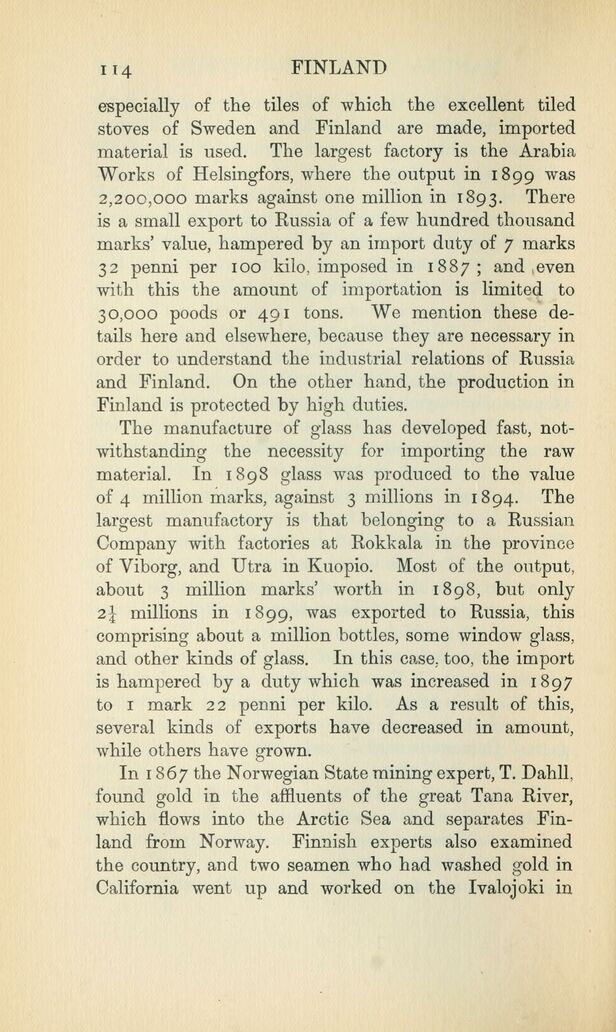
Full resolution (JPEG) - On this page / på denna sida - VI. Mining and Manufacturing Industries

<< prev. page << föreg. sida << >> nästa sida >> next page >>
Below is the raw OCR text
from the above scanned image.
Do you see an error? Proofread the page now!
Här nedan syns maskintolkade texten från faksimilbilden ovan.
Ser du något fel? Korrekturläs sidan nu!
This page has been proofread at least once.
(diff)
(history)
Denna sida har korrekturlästs minst en gång.
(skillnad)
(historik)
especially of the tiles of which the excellent tiled
stoves of Sweden and Finland are made, imported
material is used. The largest factory is the Arabia
Works of Helsingfors, where the output in 1899 was
2,200,000 marks against one million in 1893. There
is a small export to Russia of a few hundred thousand
marks’ value, hampered by an import duty of 7 marks
32 penni per 100 kilo, imposed in 1887; and even
with this the amount of importation is limited to
30,000 poods or 491 tons. We mention these
details here and elsewhere, because they are necessary in
order to understand the industrial relations of Russia
and Finland. On the other hand, the production in
Finland is protected by high duties.
The manufacture of glass has developed fast,
notwithstanding the necessity for importing the raw
material. In 1898 glass was produced to the value
of 4 million marks, against 3 millions in 1894. The
largest manufactory is that belonging to a Russian
Company with factories at Rokkala in the province
of Viborg, and Utra in Kuopio. Most of the output,
about 3 million marks’ worth in 1898, but only
2¼ millions in 1899, was exported to Russia, this
comprising about a million bottles, some window glass,
and other kinds of glass. In this case, too, the import
is hampered by a duty which was increased in 1897
to 1 mark 22 penni per kilo. As a result of this,
several kinds of exports have decreased in amount,
while others have grown.
In 1867 the Norwegian State mining expert, T. Dahll,
found gold in the affluents of the great Tana River,
which flows into the Arctic Sea and separates
Finland from Norway. Finnish experts also examined
the country, and two seamen who had washed gold in
California went up and worked on the Ivalojoki in
<< prev. page << föreg. sida << >> nästa sida >> next page >>